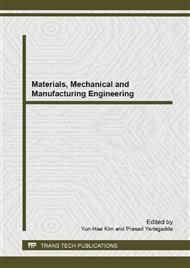p.78
p.83
p.87
p.91
p.95
p.100
p.104
p.110
p.114
Encapsulation of Vitamin E in Glassy Carbohydrates by Extrusion
Abstract:
Vitamin E (VE) was encapsulated in glassy carbohydrates by extrusion. Four typical formulations were prepared in order to have 5% and 8% VE added to each 20% and 30% modified starch containing feed material, all four formulations contained soya lecithin at 1% level as an emulsifier. The physico-chemical properties of glassy extruded products were investigated. The results showed that the VE retention rates were above 93%, meanwhile the VE oil was dispersed uniformly throughout the carbohydrate mass after extrusion. There was a slight loss for VE during the storage. The glass transition temperature (Tg) of the extrudates were above 30°C and Tg could be a good predictor of caking properties at elevated temperatures.
Info:
Periodical:
Pages:
95-99
Citation:
Online since:
November 2013
Authors:
Keywords:
Price:
Сopyright:
© 2014 Trans Tech Publications Ltd. All Rights Reserved
Share:
Citation:


